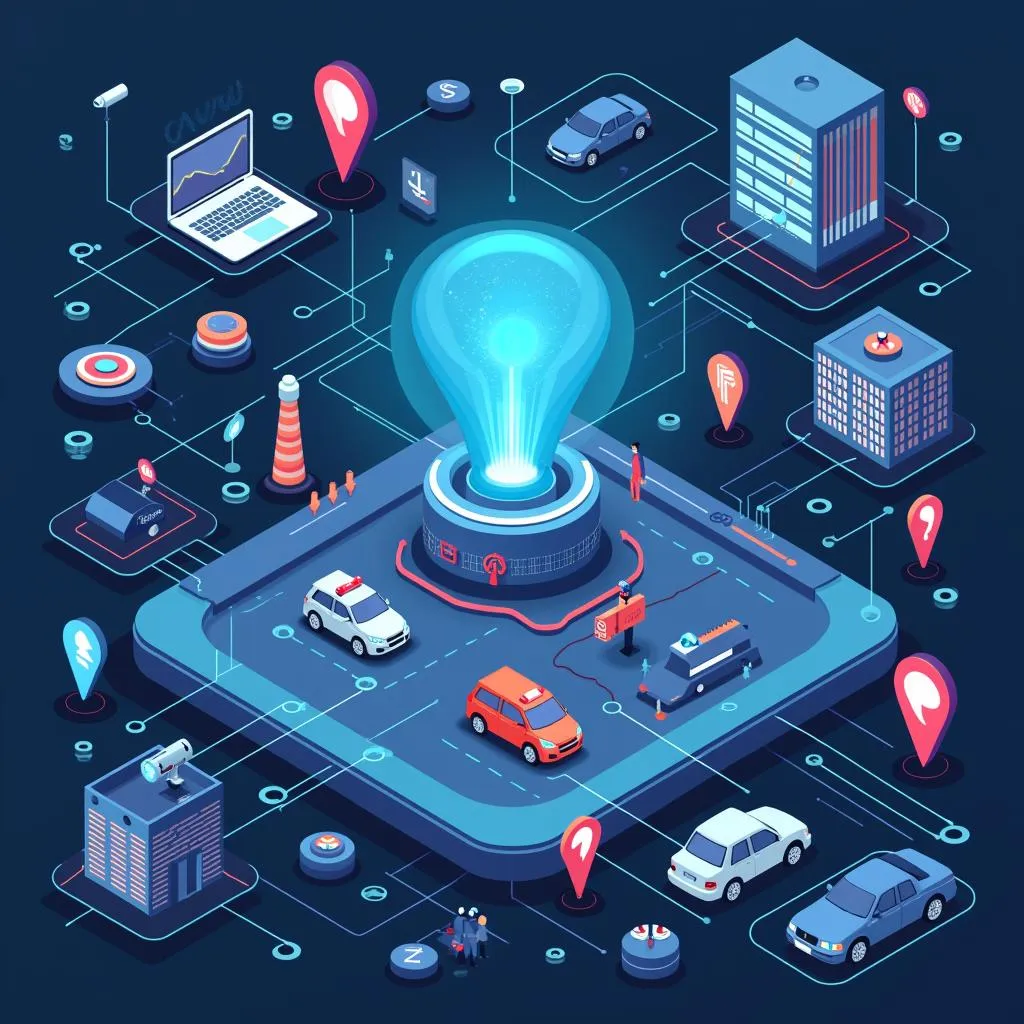In the PTE exam, Summarize Written Text is a part of the Speaking & Writing section which challenges candidates to summarize a passage in one sentence. Today, we will look into the topic of Artificial Intelligence In Public Safety through sample questions and responses for different scoring bands. This keyword is increasingly relevant in real-life PTE exams, especially as technology continues to shape modern societies.
Practice Summarize Written Text: Artificial Intelligence in Public Safety
Below, we provide sample questions followed by example answers ranked by band score.
Sample Task:
“Artificial Intelligence (AI) is revolutionizing public safety by improving crime prediction, enhancing surveillance, and automating emergency services. Governments and organizations worldwide leverage AI tools to analyze vast amounts of data and forecast possible criminal activities. Predictive policing systems utilize algorithms to identify high-risk areas, while AI-driven surveillance systems can detect unusual behavior in real-time. Furthermore, during emergencies, AI systems can optimize resource allocation, enabling faster response times and potentially saving lives. Despite its potential, concerns over data privacy, algorithmic bias, and over-reliance on technology in critical decision-making remain widespread.”
Task: Summarize the text in one sentence.
Answer Samples for Different Band Scores:
Band 90 (Perfect Score)
Artificial Intelligence is being used to enhance public safety by predicting crimes, improving surveillance, and automating emergency responses, yet it raises concerns about privacy, bias, and over-dependence on technology.
Analysis:
- Content: Excellent grasp of the main ideas (crime prediction, surveillance, emergency services).
- Form: Follows the one-sentence rule without exceeding 75 words.
- Grammar: Perfect structure with no grammatical errors.
- Vocabulary: High-level vocabulary choices like “enhance,” “optimizing,” and “bias.”
- Spelling: All spelling is correct.
Band 65 (Competent)
AI is helping to improve public safety by predicting crime, enhancing surveillance, and making emergency services more efficient, but concerns about privacy and bias still exist.
Analysis:
- Content: Covers essential ideas but misses specific issues like technological over-reliance.
- Form: Clear and concise.
- Grammar: Correct but lacks complexity.
- Vocabulary: Some basic choices like “helping” instead of “enhancing.”
- Spelling: No errors.
Band 50 (Average)
AI helps the police by predicting crimes and making emergency responses faster, but it also has issues with privacy.
Analysis:
- Content: Mentions a few key points but omits surveillance and bias.
- Form: Maintains the required one-sentence structure.
- Grammar: Simplistic and lacks variety.
- Vocabulary: Basic word choices like “helps” and “faster.”
- Spelling: No issues.
Band 35 (Developing)
AI helps predict crime and improve police work, but it can be bad for privacy.
Analysis:
- Content: Misses many critical points, such as emergency services.
- Form: Technically correct but lacks sophistication and completeness.
- Grammar: Grammatically correct but very simple.
- Vocabulary: Overly basic like “bad” instead of “concerns” or “issues.”
- Spelling: No errors.
Vocabulary & Grammar Focus
Here are 10 essential vocabulary words from the text above, complete with their phonetic transcription and usage examples:
-
Revolutionizing /ˌrɛv.əˈluː.ʃən.aɪ.zɪŋ/
Definition: Completely changing or transforming a process.
Example: “AI is revolutionizing the way public safety operations are managed.” -
Forecast /ˈfɔː.kɑːst/
Definition: To predict or estimate something in advance.
Example: “AI tools can forecast future criminal activities based on data analysis.” -
Algorithms /ˈælɡərɪðəmz/
Definition: Series of rules or instructions to solve problems, often used in computing.
Example: “Predictive policing relies heavily on advanced algorithms.” -
Resource allocation /rɪˈsɔːs ˌæləʊˈkeɪʃən/
Definition: The distribution of resources in an efficient manner.
Example: “AI optimizes resource allocation in emergency situations.” -
Bias /ˈbaɪəs/
Definition: Unfair favoritism towards one outcome or another.
Example: “One significant concern about AI is its potential for algorithmic bias.” -
Surveillance /sərˈveɪləns/
Definition: Close observation, especially of a suspected individual or area.
Example: “AI-driven surveillance systems can monitor for suspicious activity.” -
Optimize /ˈɒp.tɪ.maɪz/
Definition: Make the best or most effective use of a situation or resource.
Example: “Emergency services need to optimize their resources for a quicker response time.” -
Crucial /ˈkruːʃəl/
Definition: Of great importance or essential.
Example: “It is crucial to balance AI benefits with privacy considerations.” -
Automation /ˌɔːtəˈmeɪʃən/
Definition: The use of machines to perform tasks without human involvement.
Example: “AI provides automation in tasks like dispatching emergency services.” -
Over-reliance /ˌoʊvər rɪˈlaɪəns/
Definition: Depending too much on something.
Example: “Over-reliance on AI could lead to challenges in decision-making, especially in critical areas.”
 AI systems enhancing public safety through real-time surveillance and data analysis
AI systems enhancing public safety through real-time surveillance and data analysis
Conclusion
Artificial Intelligence in public safety is a prominent and relevant topic in Summarize Written Text tasks, as seen in the PTE exam. As this subject continues to gain traction in actual PTE scenarios, practicing such sample questions will help you understand how to handle broad topics related to technology’s impact on society effectively. Ensure you summarize concisely while addressing all the key details and potential downsides that come with technological advancements.
To further practice summarization skills related to technology’s role in safety, explore other topics like the Impacts of technological surveillance on our website.